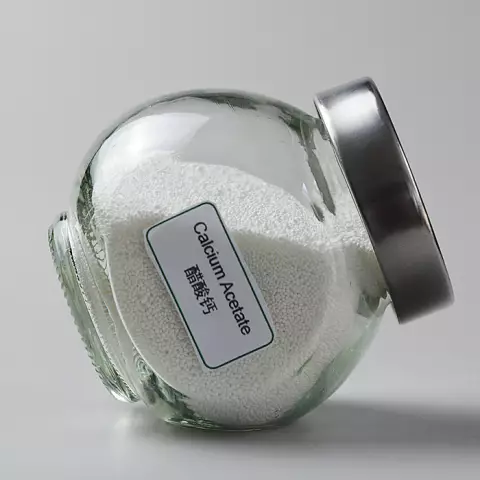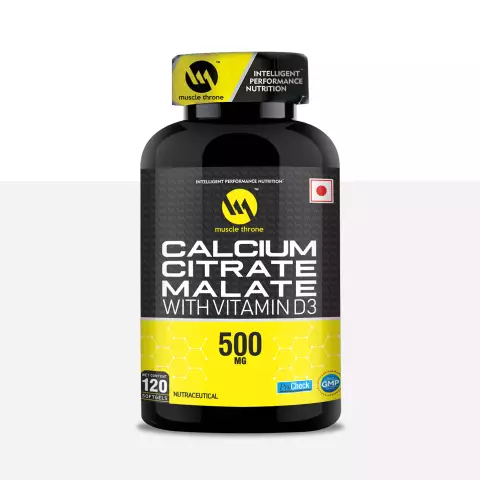- Author Rachel Wainwright [email protected].
- Public 2023-12-15 07:39.
- Last modified 2025-11-02 20:14.
Complivit Calcium D3 for babies
Complivit Calcium D3 for babies: instructions for use and reviews
- 1. Release form and composition
- 2. Pharmacological properties
- 3. Indications for use
- 4. Contraindications
- 5. Method of application and dosage
- 6. Side effects
- 7. Overdose
- 8. Special instructions
- 9. Use in childhood
- 10. In case of impaired renal function
- 11. Drug interactions
- 12. Analogs
- 13. Terms and conditions of storage
- 14. Terms of dispensing from pharmacies
- 15. Reviews
- 16. Price in pharmacies
Latin name: Complivit Calcium D3 For Kids
ATX code: A12AX
Active ingredient: Calcium carbonate + Colecalciferol (Calcium carbonate + Colecalciferol)
Producer: PHARMSTANDART-UfaVITA, JSC (Russia)
Description and photo update: 19.10.2018
Prices in pharmacies: from 226 rubles.
Buy

Complivit Calcium D3 for babies is a drug that regulates calcium-phosphorus metabolism.
Release form and composition
Dosage form - powder for preparation of suspension for oral administration: almost white or white with a characteristic orange odor; ready-made suspension - homogeneous, almost white or white, with the smell of orange (43 g each in 100 ml dark glass bottles, 1 bottle complete with a measuring spoon in a cardboard box).
Composition for 1 bottle of powder:
- active ingredients: calcium carbonate - 10 g (4 g in terms of calcium); colecalciferol (vitamin D3) - 1000 IU or 0.027 mg in terms of 100% colecalciferol (in the form of a granulate containing: corn starch, triglycerides with residual fatty acids of medium length, colecalciferol, calcium phosphate, acacia gum, sucrose, water, dl-alpha -tocopherol);
- additional components: colloidal silicon dioxide (aerosil), pregelatinized starch (pregel), sorbitol (sorbitol), orange flavor.
Composition of active substances in 5 ml of suspension:
- calcium carbonate - 200 mg (in terms of calcium);
- colecalciferol - 50 IU or 0.00135 mg (in terms of 100% colecalciferol).
Pharmacological properties
Complivit Calcium D3 for babies is a combined preparation intended for young children in order to compensate for the deficiency of calcium and vitamin D3 in the body.
Calcium is an important element involved in the formation of bone tissue, increasing its density, and also necessary in the process of blood coagulation, maintaining the stability of cardiac activity, regulation of nerve conduction, muscle contractions, and tooth mineralization.
Colecalciferol is a vitamin that regulates calcium-phosphorus metabolism in the body, increases the absorption of calcium in the intestine, contributes to the formation of teeth and bone skeleton and bone mineralization in children.
Also Complivit Calcium D3 for babies reduces the production of parathyroid hormone, which is a stimulator of increased bone resorption.
Indications for use
The drug is used to prevent calcium and vitamin D3 deficiency in children under 3 years of age.
Contraindications
- hypervitaminosis D;
- hypercalcemia;
- calcium nephrourolithiasis;
- hypercalciuria;
- decalcifying tumors (sarcoidosis, bone metastases, myeloma);
- active form of pulmonary tuberculosis;
- osteoporosis resulting from prolonged immobilization;
- fructose intolerance, sucrase / isomaltase deficiency, glucose-galactose malabsorption;
- hypersensitivity to the drug.
Carefully:
- benign granulomatosis;
- renal failure;
- simultaneous use of thiazide diuretics or cardiac glycosides.
Instructions for the use of Complivit Calcium D3: method and dosage
Complivit Calcium D3 for babies should be taken orally, with meals.
Dosing according to age:
- children under 1 year old - 5 ml once a day;
- children 1-3 years old - 5-10 ml once a day.
If necessary, the drug can be prescribed to children of other age groups in doses determined by the doctor.
The recommended duration of the preventive course is 1 month. According to the doctor's prescription, it is possible to increase the duration of admission.
Suspension preparation:
- Boil and cool water.
- Add water to a bottle of powder for 2/3 of its volume and mix thoroughly (within 1-2 minutes).
- Add water to the neck of the bottle (up to a volume of 100 ml) and mix thoroughly again.
Before each dose, the suspension bottle must be shaken well.
Side effects
When using Complivit Calcium D3 for babies in recommended doses, only allergic reactions were noted (in case of hypersensitivity to the components of the drug).
If the recommended doses are exceeded or if other medicines containing calcium are taken concomitantly, there is a possibility of an increase in the calcium content in the blood and urine (the development of hypercalcemia and hypercalciuria).
Vitamin D3 theoretically can cause the following undesirable reactions: decreased appetite, impaired renal function, constipation, polyuria, arrhythmias, increased blood pressure, arthralgia, myalgia, headache, exacerbation of the tuberculous process in the lungs.
Possible side effects of calcium carbonate: secondary increased gastric secretion, flatulence, constipation or diarrhea, gastralgia, nausea.
Overdose
An overdose of the drug can manifest itself with the following symptoms: headache, thirst, nausea, loss of appetite, constipation, vomiting, polyuria, weakness, dizziness, fainting, coma. With prolonged use of Complivit Calcium D3 for babies, calcification of tissues and blood vessels is possible. Laboratory studies reveal hypercalcemia and / or hypercalciuria.
If signs of an overdose appear, you should stop taking the drug and consult a doctor. The patient is rehydrated, prescribed diuretics, glucocorticosteroids and a calcium-restricted diet, in severe cases, hemodialysis is performed.
special instructions
Vitamin D sensitivity varies from patient to patient. In some of them, even when taking the drug in therapeutic doses, the development of the phenomena of hypervitaminosis is possible.
The possibility of an overdose should not be ruled out, especially in children, therefore the dose of vitamin D3 should not exceed more than 10-15 mg per year.
In order to avoid overdose, it is contraindicated to simultaneously use other vitamin complexes, which contain vitamin D3 and / or calcium.
Newborns who are breastfed, especially those born to mothers with dark skin or who have received insufficient sun exposure, are at increased risk of developing vitamin D deficiency. However, their sensitivity to vitamin D is different, some children may be sensitive even to very low doses. For this reason, prophylaxis should be carried out under the close supervision of a physician.
With prolonged use of the drug in high doses, chronic hypervitaminosis D3 may develop, therefore, it is necessary to control the calcium content in urine and blood, especially in patients receiving simultaneously thiazide diuretics.
Pediatric use
According to the instructions, Complivit Calcium D3 for babies is intended for children under the age of 3 years.
With impaired renal function
In case of renal failure, the drug should be used with caution.
Drug interactions
Complivit Calcium D3 for babies reduces the absorption of tetracycline antibiotics, iron preparations, bisphosphonates and digoxin. At least 2-3 hour intervals should be observed between doses.
The drug can enhance the effect of cardiac glycosides, therefore, it is necessary to monitor the patient's condition and the electrocardiogram.
Primidone, phenytoin and barbiturates increase the metabolism of vitamin D3, thereby reducing its effect.
Pantothenic acid, ascorbic acid, riboflavin, vitamin A, thiamine, tocopherol weaken the toxic effect of vitamin D3.
Vitamin D enhances the absorption of phosphorus-containing drugs, which increases the risk of developing hyperphosphatemia. In the case of concomitant administration of sodium fluoride, there should be a minimum interval of 2 hours between doses, oral tetracyclines - 3 hours.
Mineral oils, cholestyramine and colestipol reduce the absorption of vitamin D3, so an increase in the dose of the latter is required.
Thiazide diuretics, when used simultaneously, increase the likelihood of hypercalcemia.
Glucocorticosteroids reduce the absorption of calcium ions in the intestine.
With prolonged use of vitamin D3 in combination with antacids containing magnesium or aluminum, their concentration in the blood increases, as a result of which the risk of developing intoxication increases, especially in patients with chronic renal failure.
With the simultaneous use of other analogues of vitamin D and preparations containing calcium, the likelihood of developing hypervitaminosis D increases.
Analogs
Analogues of Complivit Calcium D3 for babies are: Calcium + Vitamin D3 Vitrum, Calcium D3 Classic, Calcium-D3 Nycomed Forte, Calcium-D3-MIC, Complivit calcium D3, Complivit calcium D3 forte, Natekal D3, Natemille.
Terms and conditions of storage
Keep out of the reach of children.
Store in a dark place:
- powder: at temperatures up to 25 ° С;
- suspension: at temperatures up to 15 ° C (in the refrigerator, but do not freeze).
Shelf life: powder - 2 years; suspension prepared from powder - 20 days.
Terms of dispensing from pharmacies
Available without a prescription.
Reviews of Complivit Calcium D3 for babies
According to reviews, Complivit Calcium D3 for babies is an effective drug that can be given to children from birth. The suspension does not contain preservatives and dyes, has a pleasant taste, which makes the reception convenient even for the smallest. Most parents consider the use of the drug a good prevention of calcium deficiency in a convenient form that does not cause allergic reactions and is affordable.
Price for Complivit Calcium D3 for babies in pharmacies
The price of Complivit Calcium D3 for babies is 180-300 rubles per bottle of 43 g.
Complivit Calcium D3 for babies: prices in online pharmacies
|
Drug name Price Pharmacy |
|
Complivit Calcium D3 for babies 200 mg + 5 IU / 5 ml powder for preparation of suspension for oral administration 43 g 1 pc. 226 r Buy |
|
Complivit Calcium D3 for babies powder for prig suspension. for internal approx. 200mg + 50 IU / 5ml 43g RUB 315 Buy |

Anna Kozlova Medical journalist About the author
Education: Rostov State Medical University, specialty "General Medicine".
Information about the drug is generalized, provided for informational purposes only and does not replace the official instructions. Self-medication is hazardous to health!






